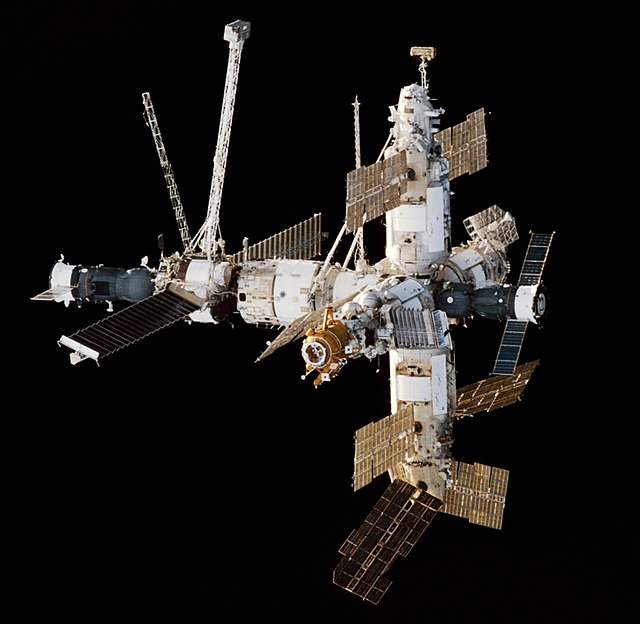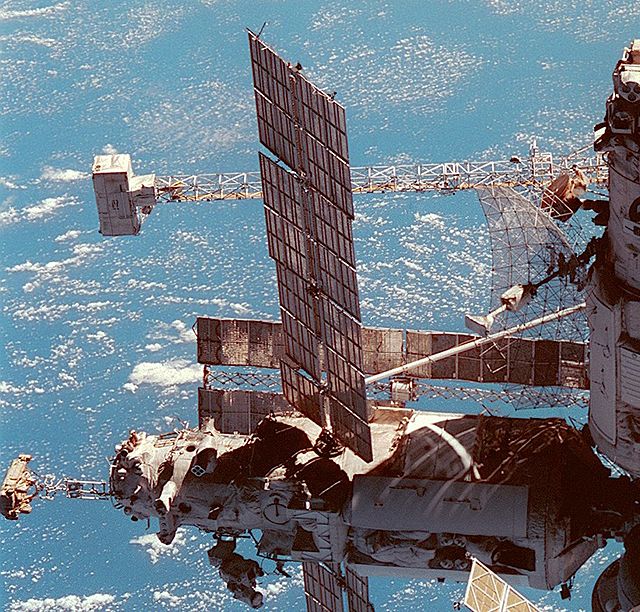Mir, DOS-7, was the first module of the Soviet/Russian Mir space station complex, in low Earth orbit from 1986 to 2001. Generally referred to as either the core module or base block, the module was launched on 20 February 1986 on a Proton-K rocket from LC-200/39 at the Baikonur Cosmodrome. The spacecraft was generally similar in design to the two previous Soviet orbital stations, Salyut 6 and Salyut 7, however possessed a revolutionary addition in the form of a multiple docking node at the forward end of the module. This, in addition to the docking port at the rear of the spacecraft, allowed five additional modules to be docked directly to DOS-7, greatly expanding the station's capabilities.
DOS-7 seen from Space Shuttle Atlantis during STS-71 in 1995.
DOS-7 seen in 1987 following the addition of a third solar array and Kvant-1.
Christmas in Mir Core Module (DOS-7)
Inside the multiple docking node
Mir was a space station that operated in low Earth orbit from 1986 to 2001, operated by the Soviet Union and later by Russia. Mir was the first modular space station and was assembled in orbit from 1986 to 1996. It had a greater mass than any previous spacecraft. At the time it was the largest artificial satellite in orbit, succeeded by the International Space Station (ISS) after Mir's orbit decayed. The station served as a microgravity research laboratory in which crews conducted experiments in biology, human biology, physics, astronomy, meteorology, and spacecraft systems with a goal of developing technologies required for permanent occupation of space.
Mir seen from Space Shuttle Endeavour during STS-89 (28 January 1998)
The Travers radar antenna, Sofora girder, VDU thruster block, SPK unit and a Strela crane, alongside Kvant-2 and Priroda
The four solar arrays on Spektr
Reinhold Ewald (right) and Vasily Tsibliyev in the core module during Ewald's visit to Mir








